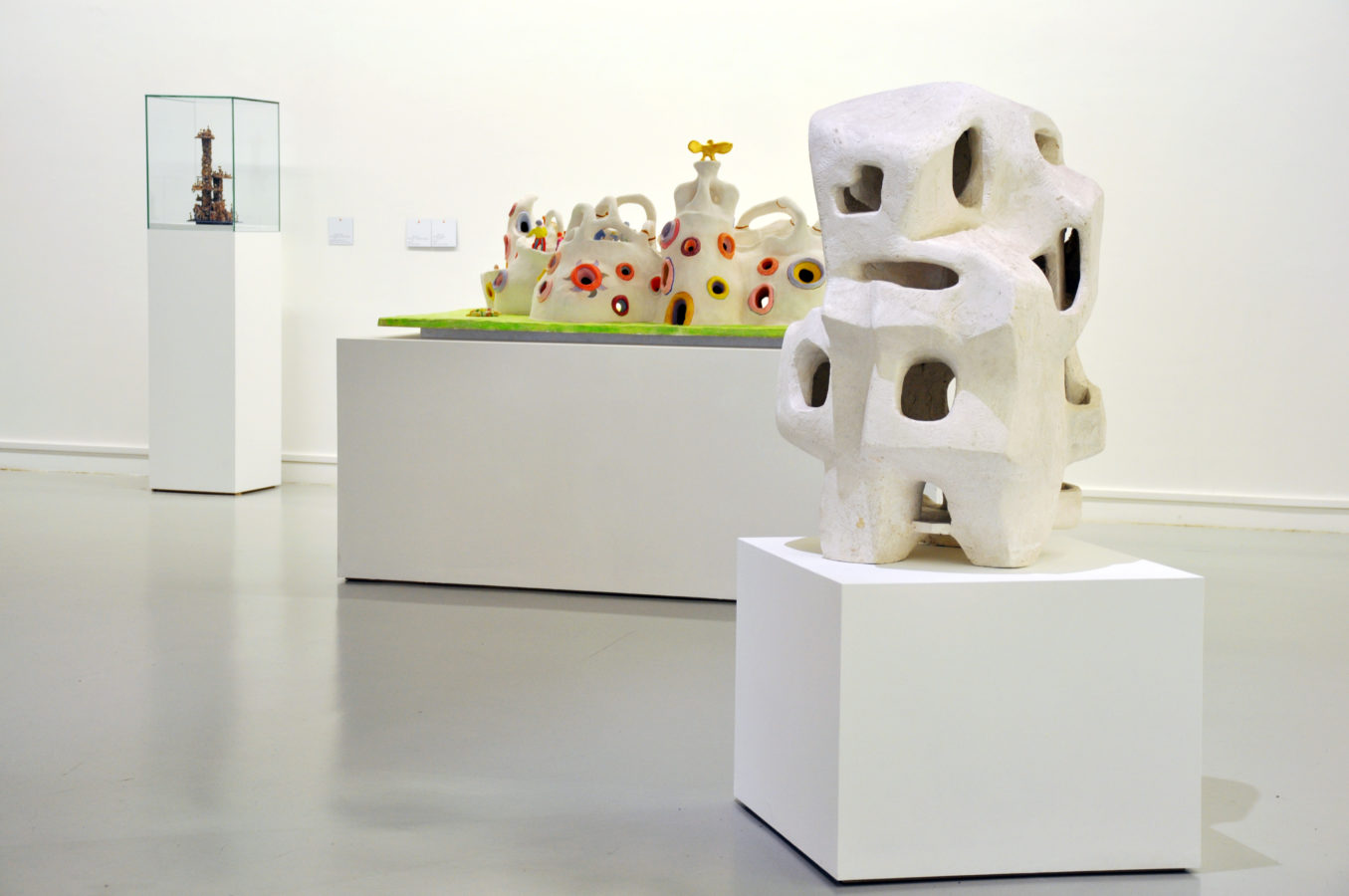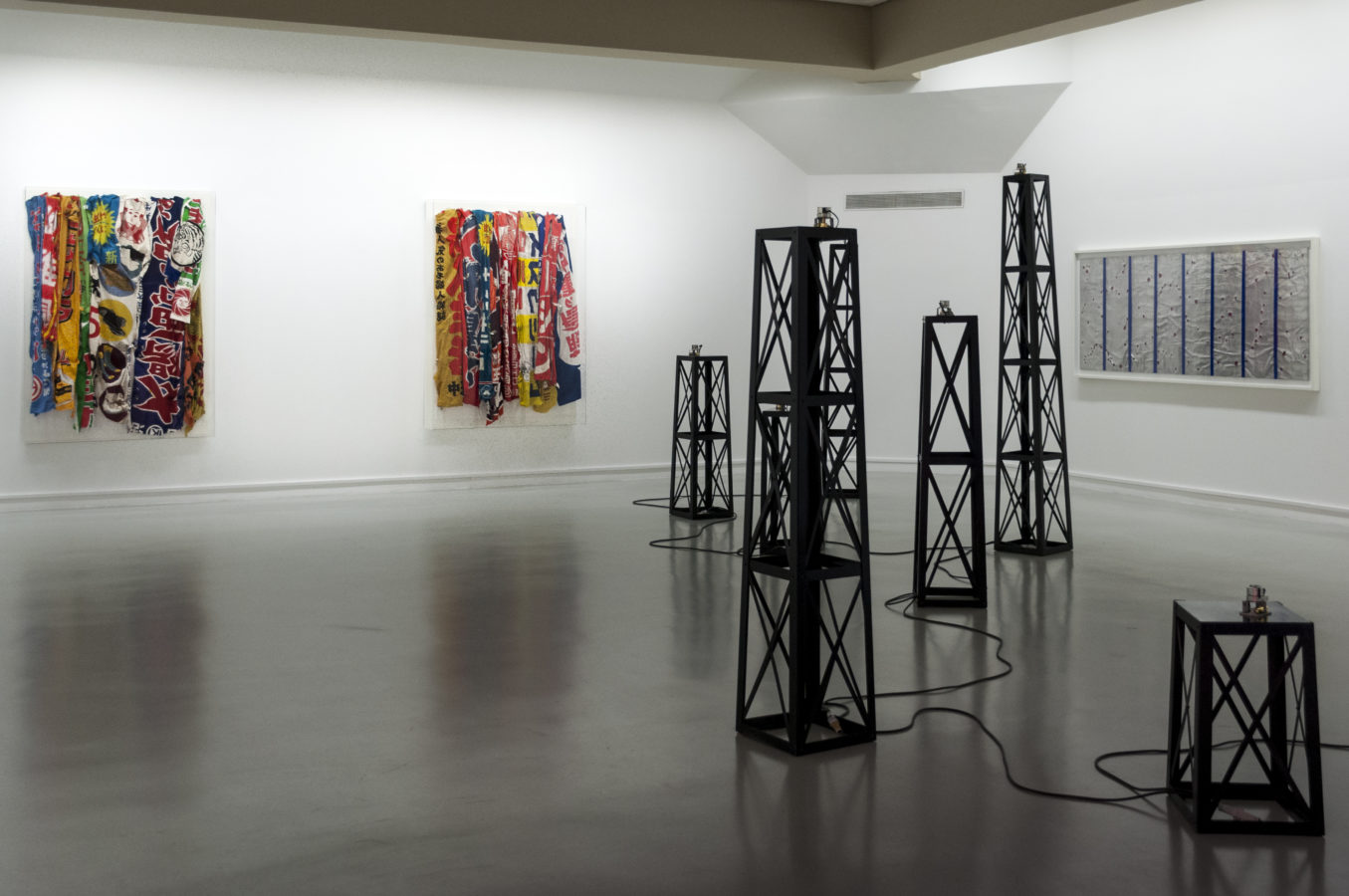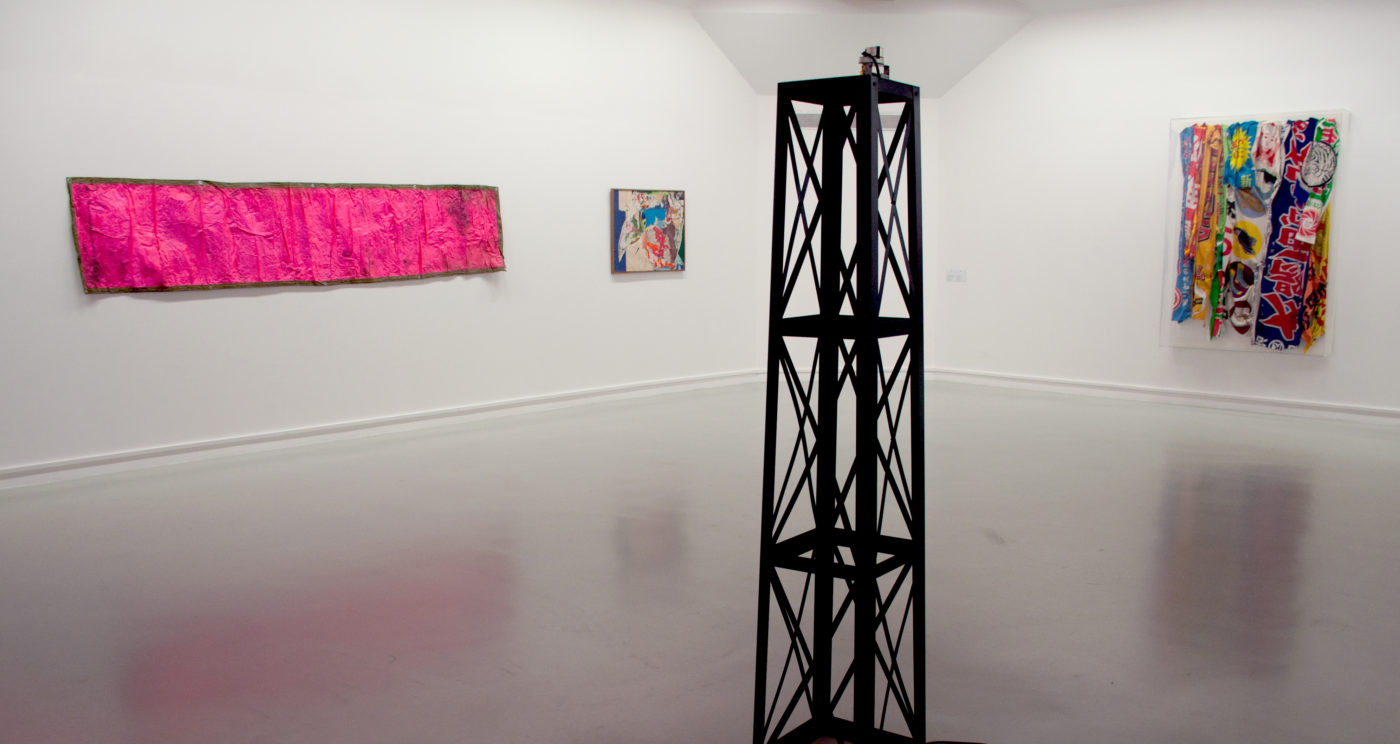CHAPTER 2: À L’AMÉRICAINE

Gilbert Delaine, a local engineer and founder of the LAAC (originally called the Contemporary Art Museum), liked to compare Dunkirk’s urban landscape to a landscape of the American Far West. In the 1970s, Dunkirk saw the arrival of the maritime steel industry and the consequent western extension of its port, while many captains of industry became passionate patrons of the arts. Gilbert Delaine’s vision for contemporary art (Arman, César, Mathieu, Télémaque, etc.) was without precedent. Favouring the production of new works, the collector Delaine brought to Dunkirk artists who imagined projects whose dimensions defied comprehension. It is this one-of-a-kind and very human story that inspired GIGANTISME — ART & INDUSTRIE. To pay tribute to this living heritage (comprising the LAAC collection and the oral stories and experiences surrounding the museum), encompassing a cultural modernity stretching from 1947 to 1989, it is essential to resituate this visionary tale within its European context, by looking more closely at this “period of all possibilities”. A period punctuated with both successes, sometimes long in coming, and dismal failures, some of which have progressively acquired an almost mythical aura, as seen with the Concorde aircraft (along with the Russian Tupolev Tu-144, the Concorde was the world’s only supersonic passenger airliner, with only 20 craft manufactured up until 1979).

The Second World War, as well as the wars following the period of reconstruction – the Cold War, the Indochina War, the Algerian War, the Korean War, the Vietnam War… – deeply influenced art and artists from the early 1950s onwards. Innovative, tried-and-tested industrial materials were adopted, notably by the New Realists. Gérard Deschamps, following his military service in Algeria, transformed the large tarpaulins of the US Army into vast monochromes. These same tarpaulins, alongside army canvass tent facades, would re-emerge some two decades later with the revival of painting, notably in the works of Claude Viallat. These borrowings from industrial production (not destined for art, yet nevertheless serving as artistic inspiration) marked a reinterpretation of or departure from the French canon symbolized by abstract paintings on stretched canvasses. Having served in the French Navy during the Indochina War, Arman called for a pacifism of nations throughout his artistic career, and various periods of his work, from his Colères series to his accumulations, evoke the processes of deadly mass planning.
The technological research dedicated to the armies’ motorized vehicles was recycled post-WWII in factory productions, further boosted by the Marshall Plan. The automotive industry in particular illustrated this industrial transition, and the automotive world is repeatedly evoked and referenced in the period’s artworks. New automobile lacquers began covering in the early 1960s pre-Pop Art, “made in France” monochromes (Bernar Venet), while Renault car parts were transformed into sculptures (Arman) and industrial plastics blossomed and spread. Drawn or painted forms of mechanical mechanisms multiplied under Jean Dewasne. Thus were artists inspired by the factory world, with its rationalized manufacturing lines, new materials, specialized tools and mass productions.

The city, also undergoing a thorough transformation, is also at the heart of those questions explored by GIGANTISME — ART & INDUSTRIE. The new urban developments, new road- and air-traffic networks became new playgrounds for artists, alongside architects and engineers. Takis displayed his luminous and kinetic sculptures on the public spaces of the ville nouvelle, Nicolas Schöffer “spacio-dynamized” with his objects of light and his technological towers, François Morellet formalized the signal light into a minimalist language… From objects of art to objects of everyday life, diverse ambitions combined and coalesced. Leisure time emerged and leisure spaces stimulated by such artists as Robert Malaval, Niki de Saint-Phalle, Christo and Guy Rottier prospered. European artists and their American counterparts (Brion Gysing) reimagined the museum. Artist-architects imagined universal housing that was transparent, airborne or buried underground. The sky was the limit. Artworks became scale-models from another world, with the luminous creations by Piotr Kowalski well illustrating this vision of the future based upon progress and humanity that would persist up until 1972.

It then became seemingly necessaire to work towards a language of common signs, visible from one’s window, from the entryway or motorway, from the sky or even the moon… There emerged an entire semantic world seeking meaning, from the perspectives of certain visual artists (Jacques Villeglé, Matt Mullican), poets (Isidore Isou, Roland Sabatier, Bernard Heidsieck) and graphic artists (Jean Widmer, Roy Adzak).
Yet beneath this frantic race for universal progress lay the risk of standardized desires and exchanges, the fear of roboticized emotions and movements. From the late 1970s and through the 1980s, techno-society’s intensification would engender gigantic upheavals, massive shakeups of art and industry.
KD, GG, GL & SW